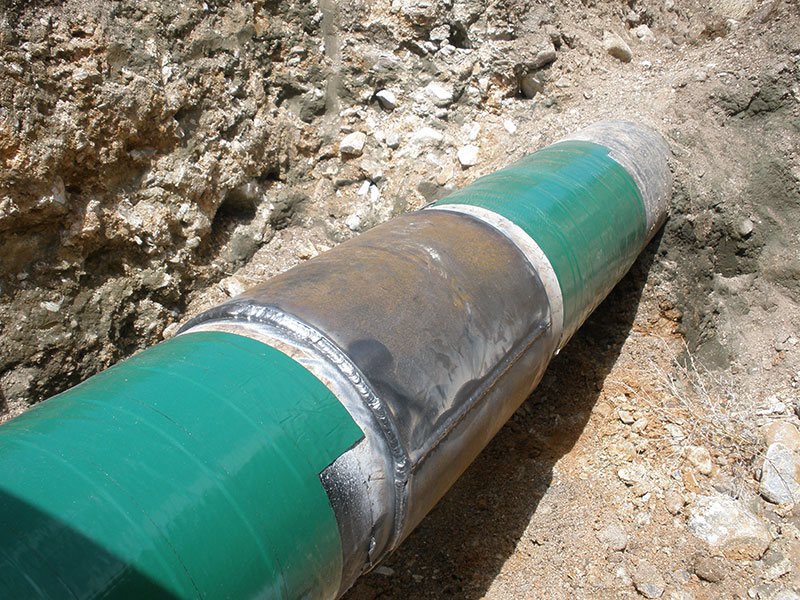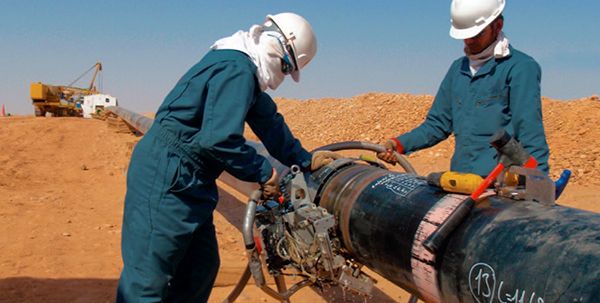Advanced Strategies in Pipeline Welding Evaluation: Advancements and Technologies for Boosted Accuracy and Reliability in Weld Evaluation
The landscape of pipe welding inspection is going through a substantial change, driven by sophisticated strategies that guarantee to improve both accuracy and dependability in weld analyses. Technologies such as automatic evaluation systems and progressed imaging technologies are redefining standard practices, while non-destructive testing methods guarantee product stability is kept.

Relevance of Weld Inspection
Making certain the stability of pipe welds is crucial to the total safety and security and dependability of commercial systems. Welds work as the structural foundation of pipes, which transport a variety of fluids under varying stress. Defects in welding can bring about tragic failures, causing not just significant economic losses however likewise potential environmental calamities and dangers to public safety. As a result, strenuous evaluation of welds is essential to the lifecycle of pipeline infrastructure.
The relevance of weld evaluation expands past plain conformity with regulatory standards. It acts as a positive measure to determine and fix flaws, such as incomplete combination, porosity, or splits, prior to they rise right into major problems. Efficient inspection techniques also add to the durability of pipes, reducing maintenance expenses and enhancing operational effectiveness.
Additionally, thorough weld evaluations foster depend on amongst stakeholders, consisting of regulatory bodies, financiers, and the communities served by these pipelines. By ensuring that all welds meet the needed criteria, companies can reduce threats and promote their online reputations. In recap, weld examination is vital not just for functional honesty however likewise for the wider implications it holds for safety and environmental stewardship.
Automated Evaluation Systems
The integration of automated assessment systems in pipeline welding has reinvented the method to making sure weld high quality and honesty. These systems employ advanced robotics and synthetic knowledge to carry out evaluations that are not just faster but additionally much more consistent than standard methods. Automated systems can cover comprehensive lengths of pipelines effectively, capturing information that human assessors might overlook due to exhaustion or environmental problems.
Among the essential benefits of automated evaluation systems is their ability to operate in unsafe settings, decreasing the threat to human inspectors. They utilize various non-destructive testing (NDT) methods, such as ultrasonic screening and magnetic bit evaluation, to examine weld integrity without jeopardizing the framework. The information gathered is processed in real-time, enabling for instant feedback and timely corrective actions when problems are determined.
Furthermore, automated systems help with the standardization of examination procedures, ensuring that each weld is evaluated versus regular criteria. This not only boosts the dependability of outcomes but additionally improves compliance with governing standards. As industries remain to prioritize safety and functional efficiency, the function of automatic evaluation systems in pipeline welding will undoubtedly broaden, leading the way for a lot more sophisticated quality guarantee techniques.
Advanced Imaging Technologies
Regularly utilized in modern-day pipeline welding inspections, progressed imaging modern technologies have considerably enhanced the ability to identify and evaluate weld issues. Methods such as electronic radiography, calculated tomography, and thermographic imaging supply inspectors with high-resolution photos that expose sub-surface defects and structural incongruities that might be unseen to the nude eye.
Digital radiography utilizes digital sensors to his response capture pictures, permitting instant evaluation and enhanced photo contrast. This brings about faster evaluations and boosted accuracy in recognizing crucial issues. Calculated tomography, on the other hand, supplies three-dimensional imaging, making it possible for assessors to visualize intricate geometries and evaluate the integrity of welds from numerous angles - Pipeline Welding Inspection. This depth of analysis is important for detecting concerns that traditional approaches might ignore.
Thermographic imaging uses infrared technology to find variations in temperature, identifying areas of prospective weak point or tension within the weld. These advanced imaging innovations not just boost flaw discovery rates yet additionally reduce the moment and resources needed for pipeline examinations. Because of this, they play an important function in keeping pipe security and integrity, ensuring conformity with sector criteria while minimizing operational dangers.
Non-Destructive Testing Approaches
Making use of various techniques, non-destructive screening (NDT) methods are crucial in pipe welding evaluations, enabling the analysis of weld stability without compromising the material's architectural honesty. NDT includes a series of techniques, including ultrasonic screening (UT), radiographic screening (RT), magnetic particle screening (MT), and dye penetrant testing (PT) Each method has distinctive advantages and applications depending upon the specific demands of the assessment.
Ultrasonic screening utilizes high-frequency acoustic waves to spot inner defects, giving exact measurements of weld density and honesty. Pipeline Welding Inspection. Radiographic screening utilizes X-rays or gamma rays to produce pictures of the weld, exposing inner problems that may not show up externally. Magnetic fragment Pipeline Welding Inspection testing is reliable for spotting surface and near-surface stoppages in ferromagnetic products, while dye penetrant testing highlights surface cracks by utilizing a tinted color
Incorporating these NDT methods right into pipe welding inspections improves the accuracy and dependability of weld evaluations, ensuring that potential failures are determined early. As sectors demand higher standards for safety and security and efficiency, the function of NDT in maintaining the stability of welded structures remains to be essential in pipe building and maintenance.

Future Fads in Weld Analysis
As we want to the future of weld evaluation, developments in technology are poised to revolutionize the methods utilized for evaluating pipeline integrity. The integration of man-made knowledge (AI) and equipment discovering in evaluation procedures is anticipated to improve the precision of imperfection detection and anticipating maintenance. These modern technologies enable for real-time information evaluation, enabling inspectors to identify possible concerns before they intensify right into significant troubles.
In addition, making use of drones geared up with sophisticated imaging systems is obtaining traction. These airborne inspections can cover huge areas quickly, capturing high-resolution images and information that can be assessed for defects in hard-to-reach places. This not just enhances safety however likewise increases performance in the inspection procedure.
In addition, the growth of smart sensing units embedded in pipe systems offers the potential for constant surveillance. useful source These sensors can find adjustments in pressure, temperature, and vibrations, providing valuable insights right into the health of the welds over time.

Final Thought
To conclude, the assimilation of sophisticated methods in pipe welding evaluation significantly enhances the accuracy and integrity of weld assessments. Developments such as automated assessment systems, advanced imaging modern technologies, and non-destructive testing methods play a crucial duty in boosting flaw detection rates and fostering proactive maintenance methods. As these innovations remain to develop, they will even more guarantee the safety and security and performance of pipeline systems, ultimately adding to the integrity of crucial framework.
